Related Research Articles
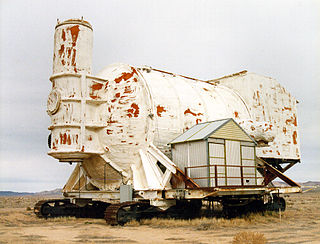
Operation Tinderbox was a series of 14 nuclear tests conducted by the United States in 1979–1980 at the Nevada Test Site. These tests followed the Operation Quicksilver series and preceded the Operation Guardian series.
Operation Guardian was a series of 14 nuclear tests conducted by the United States in 1980–1981 at the Nevada Test Site. These tests followed the Operation Tinderbox series and preceded the Operation Praetorian series.

Operation Storax was a series of 47 nuclear tests conducted by the United States in 1962–1963 at the Nevada Test Site. These tests followed the Operation Fishbowl series and preceded the Operation Roller Coaster series.
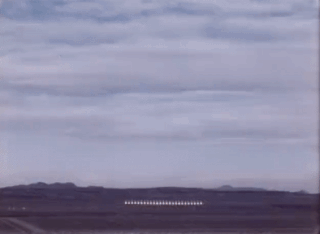
The United States's Bowline nuclear test series was a group of 47 nuclear tests conducted in 1968–1969. These tests followed the Operation Crosstie series and preceded the Operation Mandrel series.

The United States's Mandrel nuclear test series was a group of 52 nuclear tests conducted in 1969–1970. These tests followed the Operation Bowline series and preceded the Operation Emery series.

The United States's Emery nuclear test series was a group of 16 nuclear weapons tests conducted in 1970 and 1971. These tests followed the Operation Mandrel series and preceded the Operation Grommet series.
Operation Quicksilver was a series of 16 nuclear tests conducted by the United States in 1978–1979 at the Nevada Test Site. These tests followed the Operation Cresset series and preceded the Operation Tinderbox series.

Operation Sunbeam was a series of four nuclear tests conducted at the United States's Nevada Test Site in 1962. Operation Sunbeam tested tactical nuclear warheads; the most notable was the Davy Crockett.
The United States's Praetorian nuclear test series was a group of 19 nuclear tests conducted in 1981–1982. These tests followed the Operation Guardian series and preceded the Operation Phalanx series.
The United States's Phalanx nuclear test series was a group of 18 nuclear tests conducted in 1982–1983. These tests followed the Operation Praetorian series and preceded the Operation Fusileer series.
Operation Fusileer was a series of 16 nuclear tests conducted by the United States in 1983–1984 at the Nevada Test Site. These tests followed the Operation Phalanx series and preceded the Operation Grenadier series.
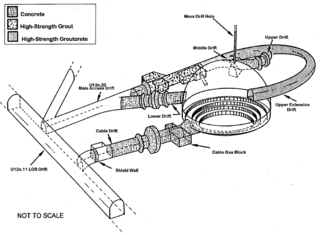
Operation Charioteer was a series of 16 nuclear tests conducted by the United States in 1985–1986 at the Nevada Test Site. These tests followed the Operation Grenadier series and preceded the Operation Musketeer series.
The United States's Musketeer nuclear test series was a group of 14 nuclear tests conducted in 1986–1987. These tests followed the Operation Charioteer series and preceded the Operation Touchstone series.

The United States's Touchstone nuclear test series was a group of 13 nuclear tests conducted in 1987–1988. These tests followed the Operation Musketeer series and preceded the Operation Cornerstone series.

The United States's Grommet nuclear test series was a group of 34 nuclear tests conducted in 1971–1972. These tests followed the Operation Emery series and preceded the Operation Toggle series.
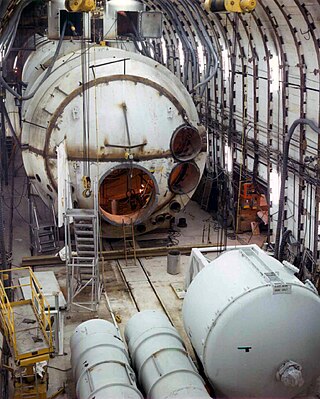
The United States's Toggle nuclear test series was a group of 28 nuclear tests conducted in 1972–1973. These tests followed the Operation Grommet series and preceded the Operation Arbor series.
The United States's Arbor nuclear test series was a group of 18 nuclear tests conducted in 1973–1974. These tests followed the Operation Toggle series and preceded the Operation Bedrock series.

Operation Anvil was a series of 21 nuclear tests conducted by the United States in 1975–1976 at the Nevada Test Site. These tests followed the Operation Bedrock series and preceded the Operation Fulcrum series.
Operation Roller Coaster was a series of four nuclear tests conducted jointly by the United States and the United Kingdom in 1963, at the Nevada Test Site. The tests did not involve the detonation of any nuclear weapons. Instead, their purpose was to evaluate the distribution of radioactive particles in a "dirty bomb" scenario, or an inadvertent, non-nuclear detonation of a nuclear weapon, as well as to evaluate the effectiveness of storage structures in containing the explosion and the particles released. The tests followed the Operation Storax series and preceded the Operation Niblick series.
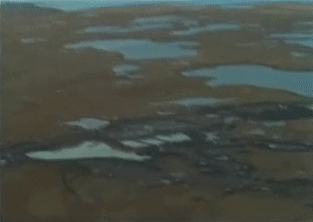
The United States's Flintlock nuclear test series was a group of 47 nuclear tests conducted in 1965–1966. These tests followed the Operation Whetstone series and preceded the Operation Latchkey series.
References
- 1 2 3 4 5 6 7 8 9 10 11 12 13 14 15 16 17 Yang, Xiaoping; North, Robert; Romney, Carl (August 2000), CMR Nuclear Explosion Database (Revision 3), SMDC Monitoring Research
- ↑ "Time Zone Historical Database". iana.com. Retrieved March 8, 2014.
- 1 2 3 4 5 6 7 8 9 10 11 12 13 14 15 16 Official list of underground nuclear explosions, Sandia National Laboratories, July 1, 1994, retrieved December 18, 2013
- 1 2 3 4 5 6 7 8 9 10 11 12 13 14 15 16 United States Nuclear Tests: July 1945 through September 1992 (PDF) (DOE/NV-209 REV15), Las Vegas, NV: Department of Energy, Nevada Operations Office, December 1, 2000, archived from the original (PDF) on October 12, 2006, retrieved December 18, 2013
- 1 2 3 Hechanova, Anthony E.; O'Donnell, James E. (September 25, 1998), Estimates of yield for nuclear tests impacting the groundwater at the Nevada Test Site, Nuclear Science and Technology Division
- 1 2 Operation Argus, 1958 (DNA6039F), Washington, DC: Defense Nuclear Agency, Department of Defense, 1982, retrieved November 26, 2013
- 1 2 3 4 5 6 7 Estimated exposures and thyroid doses received by the American people from Iodine-131 in fallout following Nevada atmospheric nuclear bomb tests, Chapter 2 (PDF), National Cancer Institute, 1997, retrieved January 5, 2014
- 1 2 3 4 5 6 7 8 Radiological Effluents Released from U.S. Continental Tests 1961 Through 1992 (DOE/NV-317 Rev. 1) (PDF), DOE Nevada Operations Office, August 1996, archived from the original (PDF) on November 3, 2013, retrieved October 31, 2013
- ↑ "The B83 Bomb". nuclearweaponarchive.org. Retrieved March 26, 2024.
- ↑ Telegram From the Department of State to the Embassy in the Soviet Union. Foreign Relations of the United States, 1981–1988, Volume V, Soviet Union, March 1985–October 1986 - Office of the Historian. July 29, 1985. Retrieved June 25, 2022.